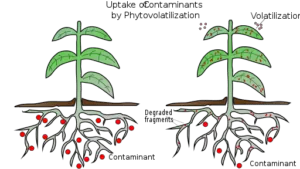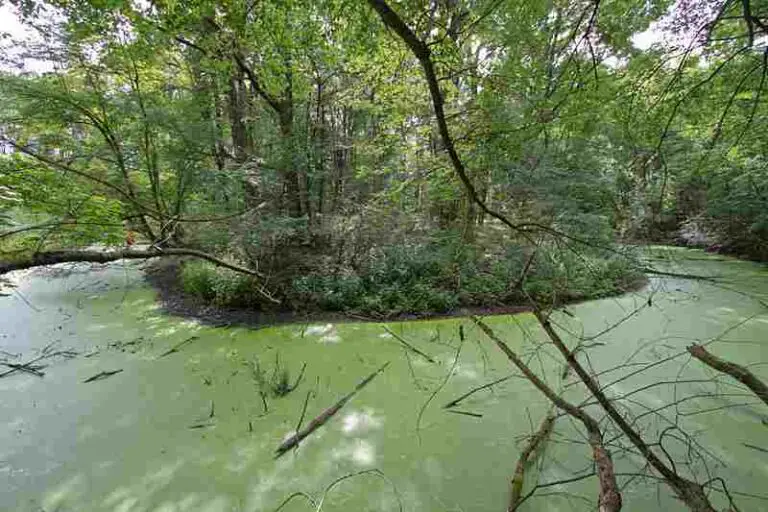Environmental Remediation Meaning, Steps, Types, and Examples
Environmental remediation is the removal of pollutants from soil, water and air, using any of a variety of physical, chemical and biological methods. This article discusses environmental remediation meaning, steps, types and examples;
-What is Environmental Remediation? 6 Definitions of Environmental Remediation
-Steps in Environmental Remediation
-Types of Environmental Remediation
-Examples of Environmental Remediation
What is Environmental Remediation? 6 Definitions of Environmental Remediation
Environmental remediation is a process whereby contaminants or pollutants are either reduced or completely removed from the environment, using effective remediation techniques.
The concept of environmental remediation can be defined in terms of controlling or addressing environmental degradation;
Environmental remediation is a combination of methods used to reverse or mitigate environmental degradation, and to improve the quality of the environment in terms of soil, air and water.
With regard to environmental degradation, it is necessary to consider that environmental remediation is capable of improving the health of the human population, and the stability of the ecosystem.
Remediation itself is the act of reducing or reversing damage [4]. These considerations can be included in the definition of environmental degradation.
Environmental remediation is the act of improving the stability of the ecosystem and the health of the human population, by reversing or reducing the effects of factors hat cause damage to the environment.
There are various known causes of environmental degradation. These causes are mostly related to human activity, and can be used to define environmental remediation;
Environmental remediation is the reduction or removal of pollutants released into soil, water or air, as a result of processes like industrialization, agriculture, petroleum exploration, construction and mining.
Since pollution and degradation can be seen as environmental hazards [13], it is possible to define environmental remediation as a means of addressing such hazards;
Environmental remediation is the reversal of environmental hazards such as pollution and degradation, by the use of various remedial mechanisms to improve the quality of water, soil and air.
Lastly, the role of biotechnology in environmental remediation can be used to define the concept, as stated below;
Environmental remediation is a biotechnological method involving the reduction or removal of contaminants from soil, air and water, and the general improvement of environment quality.
Steps in Environmental Remediation
The 4 steps in environmental remediation are appraisal, treatment, reassessment, and monitoring.
1). Appraisal
Appraisal is the first step in the process of environmental remediation.
It involves a detailed assessment of the conditions of a degraded environment, in order to determine the feasibility of remediation [3].
During appraisal, the cause of degradation, type of degradation, severity of degradation, and usable options for remediation are considered.
Appraisal helps to develop a workable plan and strategy for remediation.
2). Treatment or Remediation
After appraisal, treatment of the degraded environment commences.
This step represents the point at which the contaminants, or any other unfavorable attributes of the environment, are removed.
Before treatment, site preparation is usually carried out. This generally involves measures taken to maximize the effect of the remedial treatment in terms of addressing the environmental degradation problem.

Factors that help to determine the method of treatment include the historical use of the site, as well as the nature and severity of pollution. Any of a variety of remediation options may be applied during treatment.
3). Reassessment
Reassessment is the third step in the process of environmental remediation.
Also referred to as post-remediation assessment, the purpose of this step is to analyze the effectiveness of the treatment which has been carried out.
Reassessment is necessary to make decisions on whether to carry out further treatment of a site. It also helps to understand what methods are most suitable for various types of environmental degradation, and what approach to monitoring is best.
4). Monitoring
Monitoring is a repetitive and continuous evaluation of soil, water, air and sediments in a site, after environmental remediation has been carried out.
The goal of monitoring is to assess the conditions and trends of the environment [11]. It helps to provide information on the status of the site after remediation.
Through monitoring, information can be derived to understand the degree of stability and sustainability of a site, and the best uses for the site.
Some tools used to collect samples from sites, for post-remediation monitoring are solid-tube samplers, augers, core samplers and scoops.
Types of Environmental Remediation
The three (3) main types of environmental remediation are soil remediation, water remediation, and air remediation.
However, this classification is based on the aspect of the environment which is undergoing remediation. Other criteria which can be used to differentiate types of environmental remediation are location of remediation, and method of remediation.
-Types of Environmental Remediation Based on Aspect of Environment
1). Soil Remediation
Soil remediation is the treatment, improvement or restoration of degraded soil.
Other terms that can be used to describe this type of environmental remediation are sediment remediation and land remediation.
Soil remediation may be used to address pollution or other forms of land degradation like topographic disintegration.
In the case of pollution, remediation can be used to eliminate pollutants like hydrocarbons, pesticides, and heavy metals from soil and sediments [14].
Methods that can be used to achieve this may be physical, chemical or biological.
Topographic disintegration may occur due to mining, erosion, or earthquakes, among other potential causes. In this case, remediation will involve filling and/or levelling of the site.
2). Water Remediation
Water remediation is a type of remediation that involves reducing or eliminating contaminants in water [5].
A broader definition can be given as follows;
Water remediation is the sanitization or restoration of water that has undergone degradation.
The goal of water remediation is to improve the quality, availability and sustainability of water. It comprises of methods that serve to treat degraded water and restore it to a state of usability.
There are various methods which can be utilized in water remediation, just as there are various forms of water degradation.
Also, water remediation can be distinguished into surface water and groundwater remediation, based on the location of the water relative to the Earth’s surface.
3). Air Remediation
Also known as ‘atmospheric remediation,’ air remediation is the improvement of air quality and atmospheric sustainability, by removing pollutants and restoring optimal conditions.
Some examples of atmospheric degradation and air pollution include particulate matter pollution, ozone layer depletion and oxygen deficiency. The causes of these problems may be natural or anthropogenic.
One of the technologies used in air remediation is nanotechnology, whereby nanomaterials are used to remove air contaminants [15].
-Types of Environmental Remediation Based on Location
Based on location, the two types of environmental remediation are in-situ and ex-situ remediation.
1). In Situ Environmental Remediation
In situ remediation is a type of environmental remediation whereby treatment is carried out directly on the site, without any excavation or other forms of removal, of contaminated materials.
The term in situ is an alternative term for ‘in place’. This means that in situ environmental remediation is performed in place, at the same location where degradation has occurred.
An example of in situ remediation is in situ bioremediation, whereby microbes are introduced into the polluted environment to breakdown and eliminate the pollutants.
Factors that determine the suitability of in situ remediation for a site include type of pollutant, severity of pollution, scale of degradation and environmental characteristics.
In many cases, in situ remediation requires a combination of different technologies to treat the polluted area [7].
2). Ex Situ Environmental Remediation
Ex situ remediation is the removal of pollutants or restoration of a degraded environment, involving the physical removal of the contaminated material from the site.
In ex situ remediation, soil, air or water which is contaminated or degraded, is excavated or removed from its original position, and transported to another site where it is treated [9].
Ex situ remediation is often applied where the degree of contamination is severe, or where the on-site conditions are not suitable for effective treatment.
The contaminated medium which has been removed from the site, is often treated under controlled conditions in a closed system, such as a reactor.
-Types of Environmental Remediation Based on Method
Based on method, the three main types of environmental remediation are physical, chemical and biological remediation.
1). Physical Remediation
Physical remediation is the use of physical methods and characteristics to remove pollutants, and to restore or improve the quality of the environment.
This type of environmental remediation is relatively simple, as it does not involve complex chemical or biochemical processes.
Physical remediation is suitable for cases of environmental remediation where the site can be treated and restore solely by physical means. It is therefore not effective for highly reactive or persistent contaminants.
Some techniques under physical remediation include aeration, vitrification, soil washing, permeable barrier systems, electrokinesis, and encapsulation.
Thermal treatment can be categorized under physical remediation, although in some cases it is considered a separate type of environmental remediation of its own.
In a nutshell, physical remediation uses the physical characteristics of the sites and pollutants, to address problems of degradation and improve environmental quality.
2). Chemical Remediation
Chemical remediation is the removal or reduction of pollutants in a site, using chemical substances, processes and reactions.
This type of environmental remediation is mostly carried out in situ (in place; on the site).
In chemical remediation, chemical reactions are induced by adding a chemical agent to the polluted medium. The method is effective for both soil and water (groundwater, surface water) [16].
Chemical reactions used to treat contaminated sites include reduction, oxidation, and dissolution [10]. As a result of these reaction, the pollutant is reduced, oxidized, dissolved, adsorbed, or extracted.
Sites which are polluted by highly reactive materials are suitable for chemical remediation. Examples of such cases include sites with heavy metal pollution, and hydrocarbon pollution.
Because of the reactive nature of these pollutants, they are susceptible to disintegration and removal when subjected to chemical processes.
Some reactive agents used in chemical remediation include biomaterials, clays, permanganate, persulfate, hydrogen peroxide, ozone, and metallic oxides.
When utilized without proper appraisal and precautions, chemical remediation can be harmful to the environment, and the ecosystem.
3). Biological Remediation
Also known as ‘bioremediation,’ this type of environmental remediation involves the use of biological organisms, reactions and processes, to eliminate pollutants and improve environmental quality.
Biological remediation is the use of plants, microorganisms and biochemical reactions, to remove inorganic and xenobiotic compounds from the environment.
This type of environmental remediation is a branch of biotechnology, which depends on biotechnological methods and equipment, to treat a degraded site.
Bioremediation is known to be effective for soil and water treatment [14]. It may also be done in situ or ex situ.
One of the key advantages of bioremediation is its versatility. It provides a good balance of cost, technological complexity, effectiveness, efficiency and reliability, compared to other types of environmental remediation.
Bioremediation is also known to be an eco-friendly option.
Organisms that can be used for this type of remediation include bacteria, algae, fungi, and plants. The use of plants in biological remediation can be referred to as phytoremediation [8].

One of the most common processes used in this type of remediation is biodegradation, whereby pollutants are broken down by microbial activities and enzymes.
Bioremediation can be used to treat sites polluted by chlorinated solvents [6] and hydrocarbons [12], among others.
Examples of Environmental Remediation
Examples of environmental remediation are;
- In situ physical remediation of chlorinated solvent pollution
- Biological remediation of carcinogenic acrylonitrile
- Biochemical remediation of hydrocarbon-polluted soil
These 3 examples are discussed below;
1). In situ Remediation of Chlorinated Solvent Pollution [1]
Chlorinated solvents are volatile organic compounds (VOCs) which occur in soil or water.
In groundwater, this pollutant may be either dissolved or may occur in a non-aqueous phase.
This example of environmental remediation involves the use of air sparging (a physical remediation method) to treat groundwater that is polluted by chlorinated solvents.
Air sparging is the injection of high-pressure air into a medium, to saturate the medium and cause contaminants to segregate or migrate.
The study showed that increased rate of air injection causes an increase in the rate of contaminant migration.
2). Biological Remediation of Carcinogenic Acrylonitrile [17]
The microorganism used in this project was Pseudomonas aeruginosa; a specie of bacteria.
This microbe was cultured in isolation, and the efficiency of remediation (that is; biodegradation) of was evaluated.
The study showed that biological remediation using Pseudomonas aeruginosa is an effective and relatively-inexpensive approach.
It also showed that the optimal adaptation period for the microbes is 7 days, and the efficiency of remediation using this method is about 92.7%.
3). Biochemical Remediation of Hydrocarbon-polluted Soil [2]
As the term implies; biochemical remediation involves the use of both biological and chemical methods to treat degraded sites.
In this example, a combination of microbial bioremediation and chemical oxidation was applied, in the treatment of hydrocarbon polluted soil.
The two techniques were alternated, with chemical oxidation used before bioremediation. It was proven that both methods are equally effective to degrade the pollutant, and the combined application leads to faster and more quality results.
About 82% of hydrocarbons in the soil were broken down and removed within three months, using the biochemical approach.
Conclusion
Environmental remediation is the removal of pollutants or the restoration of a degraded environment, using any of a variety of methods.
The three steps in environmental remediation are;
1. Appraisal
2. Treatment or Remediation
3. Reassessment
4. Monitoring
Types of Environmental Remediation Based on Aspect of Environment are;
1. Soil Remediation
2 Water Remediation
3. Air Remediation
Types of Environmental Remediation Based on Location. are;
1. In Situ Environmental Remediation
2. Ex Situ Environmental Remediation
Types of Environmental Remediation Based on Method, are;
1. Physical Remediation
2. Chemical Remediation
3. Biological Remediation
Examples of environment remediation are;
- In situ physical remediation of chlorinated solvent pollution
- Biological remediation of carcinogenic acrylonitrile
- Biochemical remediation of hydrocarbon-polluted soil
References
1).Adams, J. A.; Reddy, K. R.; Tekola L. (2011). “Remediation of chlorinated solvent plumes using in-situ air sparging–a 2-D laboratory study.” Int J Environ Res Public Health. 2011 Jun;8(6):2226-39. Available at: https://doi.org/10.3390/ijerph8062226. (Accessed 10 April 2022).
2).Babavev, E.; Am, A.; Ss, S.; Garkavenko,.V. (2019). “The New Combined Chemical-Biological Remediation Method for Oil- Polluted Soils: Oxidative Disposal and Establishing Sustainable Soil Cenosis.” J. Bioremediat. Biodegrad. 10:464, Vol 10(3). Available at: https://www.researchgate.net/publication/335396998_The_New_Combined_Chemical-Biological_Remediation_Method_for_Oil-_Polluted_Soils_Oxidative_Disposal_and_Establishing_Sustainable_Soil_Cenosis. (Accessed 10 April 2022).
3).Bardos, P.; Thomas, H. F.; Smith, J.; Harries, N.; Evans, F.; Boyle, R.; Howard, T.; Lewis, R.; Thomas, A. O.; Dent, V. L.; Haslam, A. (2021). “Sustainability assessment framework and indicators developed by SuRF-UK for land remediation option appraisal.” Remediation Journal 31(1):1-22. Available at: https://doi.org/10.1002/rem.21668. (Accessed 10 April 2022).
4).Burton, R. (2021). “The Truth About Remediation Services.” Available at: https://www.hcr-llc.com/blog/the-truth-about-remediation. (Accessed 10 April 2022).
5).Dadrasnia, A.; Shahsavari, N.; Emenike, C. U. (2013). “Remediation of Contaminated Sites,” in V. Kutcherov, A. Kolesnikov (eds.), Hydrocarbon, IntechOpen, London. Available at: https://doi.org/10.5772/51591. (Accessed 10 April 2022).
6).Henry, B. (2010). “Biostimulation for Anaerobic Bioremediation of Chlorinated Solvents.” In book: In Situ Remediation of Chlorinated Solvent Plumes (pp.357-423). Available at: https://doi.org/10.1007/978-1-4419-1401-9_12. (Accessed 10 April 2022).
7).Jordens, A.; Mohammadian, S.; Krok, B.; Saadaoui, H.; Meckenstock, R.; Haemers, J. (2019). “Combination of remediation technologies: In Situ thermal desorption and In Situ Immobilization.” A Paper Presented at the AquaConSoil Conference, Antwerpen, May 2019. Available at: https://www.researchgate.net/publication/333079817_Combination_of_remediation_technologies_In_Situ_thermal_desorption_and_In_Situ_Immobilization. (Accessed 10 April 2022).
8).Kumar, G.; Bhatt, P.; Lal, S. (2021). “Phytoremediation: A Synergistic Interaction between Plants and Microbes for Removal of Petroleum Hydrocarbons”, in M. L. Larramendy, S. Soloneski (eds.), Soil Contamination – Threats and Sustainable Solutions, IntechOpen, London. Available at: https://doi.org/10.5772/intechopen.93764. (Accessed 10 April 2022).
9).Kuppusamy, S.; Palanisami, T.; Mallavarapu, M.; Kadiyala, V.; Naidu, R. (2016). “Ex-situ remediation technologies for environmental pollutants: A critical perspective.” Reviews of Environmental Contamination and Toxicology 236:117-192. Available at: https://doi.org/10.1007/978-3-319-20013-2_2. (Accessed 10 April 2022).
10).Li, X. D.; Schwartz, F. W. (2004). “DNAPL remediation with in situ chemical oxidation using potassium permanganate. Part I. Mineralogy of Mn oxide and its dissolution in organic acids.” Journal of Contaminant Hydrology 68(1-2):39-53. Available at: https://doi.org/10.1016/S0169-7722(03)00145-1. (Accessed 10 April 2022).
11).Luo, P.; He, B.; Takara, K. T.; Razafindrabe, B. H. N.; Nover, D.; Yamashiki, Y. A. (2011). “Spatiotemporal trend analysis of recent river water quality conditions in Japan.” Journal of Environmental Monitoring 13(10):2819-29. Available at: https://doi.org/10.1039/c1em10339c. (Accessed 10 April 2022).
12).Mahjoubi, M.; Cappello, S.; Souissi, Y.; & Cherif, A. J. A. (2017). “Microbial Bioremediation of Petroleum Hydrocarbon– Contaminated Marine Environments.” In (Ed.), Recent Insights in Petroleum Science and Engineering. IntechOpen. Available at: https://doi.org/10.5772/intechopen.72207. (Accessed 10 April 2022).
13).Maurya, P. K. M.; Vishwavidyalaya, G. K.; Ali, S. A.; Ahmad, A.; Zhou, Q.; Da Silva, J.; Khane, E.; Ali, A. (2020). “An introduction to environmental degradation: Causes, consequence and mitigation.” In book: Environmental Degradation: Causes and Remediation Strategies (pp.1-20). Available at: https://doi.org/10.26832/aesa-2020-edcrs-01. (Accessed 10 April 2022).
14).Sharma, I. (2020). “Bioremediation Techniques for Polluted Environment: Concept, Advantages, Limitations, and Prospects”, in M. A. Murillo-Tovar, H. Saldarriaga-Noreña, A. Saeid (eds.), Trace Metals in the Environment – New Approaches and Recent Advances, IntechOpen, London. Available at: https://doi.org/10.5772/intechopen.90453. (Accessed 10 April 2022).
15).Sharma, R.; Nehra, S.; Kumar, D. (2021). “Environmental Monitoring by Removing Air Pollutants Using Nanocomposites Materials.” In book: Environmental Remediation Through Carbon Based Nano Composites (pp.43-59). Available at: https://doi.org/10.1007/978-981-15-6699-8_3. (Accessed 10 April 2022).
16).Siegrist, R. L.; Urynowicz, M. A.; West, O.; Crimi, M.; Struse, A. M.; Lowe, K. S. (2000). “In situ chemical oxidation for remediation of contaminated soil and ground water.” Proceedings of the Water Environment Federation 2000(10):203-224. Available at: https://doi.org/10.2175/193864700784545388. (Accessed 10 April 2022).
17).Sufyan, S.; Naj, L. M.; Mohammed, M. (2018). “Biological Treatment of Carcinogenic Acrylonitrile Using Pseudomonas aeruginosa in Basra City.” Journal of Biological Sciences: Volume 18 (8): 415-424, 2018. Available at: https://doi.org/10.3923/jbs.2018.415.424. (Accessed 10 April 2022).



